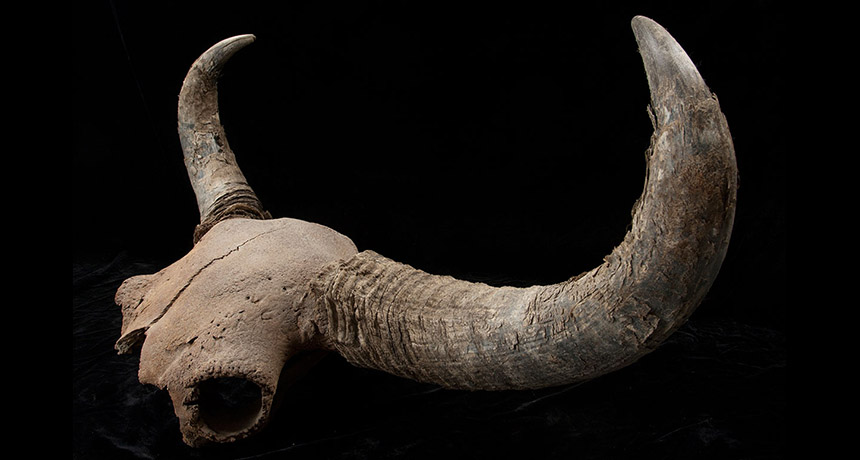Human route into Americas traced via trail of bison fossils

At the end of the last Ice Age, humans undertook an epic American road trip — trekking from a northern land bridge into interior of North America. But details about the route and timing of that trip are hotly debated.
Some researchers think that humans followed a so-called “ice-free corridor” along the eastern Rocky Mountains. Studies have suggested, though, that the corridor froze over and became impassable around 21,000 years ago. Now, a bread crumb trail of fossils showing the movement of ancient bison indicates that the corridor may have reopened a few thousand years later, researchers report in the Proceedings of the National Academy of Sciences the week of June 6.
Analyzing DNA samples from 78 bison fossils unearthed in Canada, a team led by Beth Shapiro of the University of California, Santa Cruz, found that genetically distinct northern and southern populations moved north and south along the corridor by 13,000 years ago. That means humans may have also hiked along the slopes of the Rockies at the same time.
These probably weren’t the first humans to head south. Recent archaeological evidence points to early Americans trekking as far as Chile more than 15,000 years ago. But the corridor could have served as a later route, the team argues.